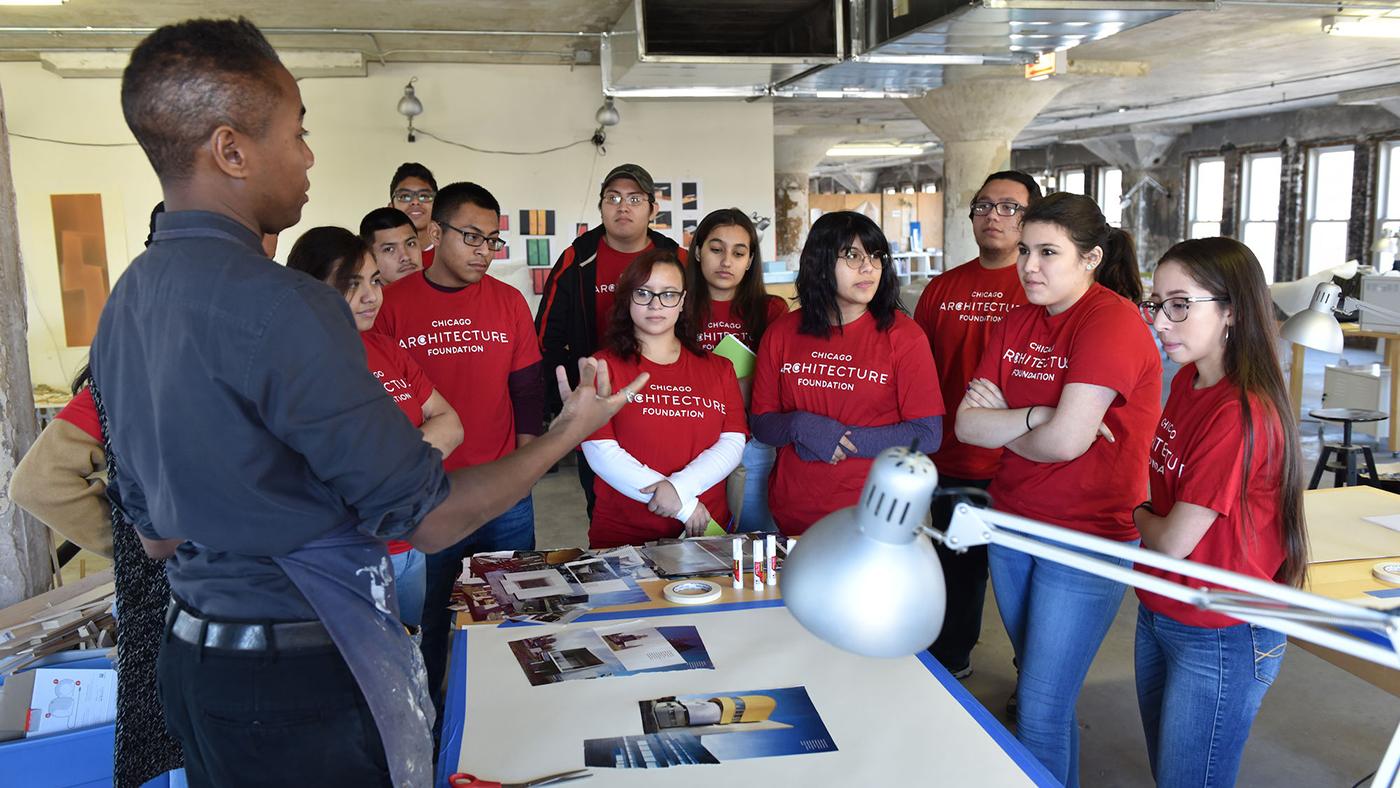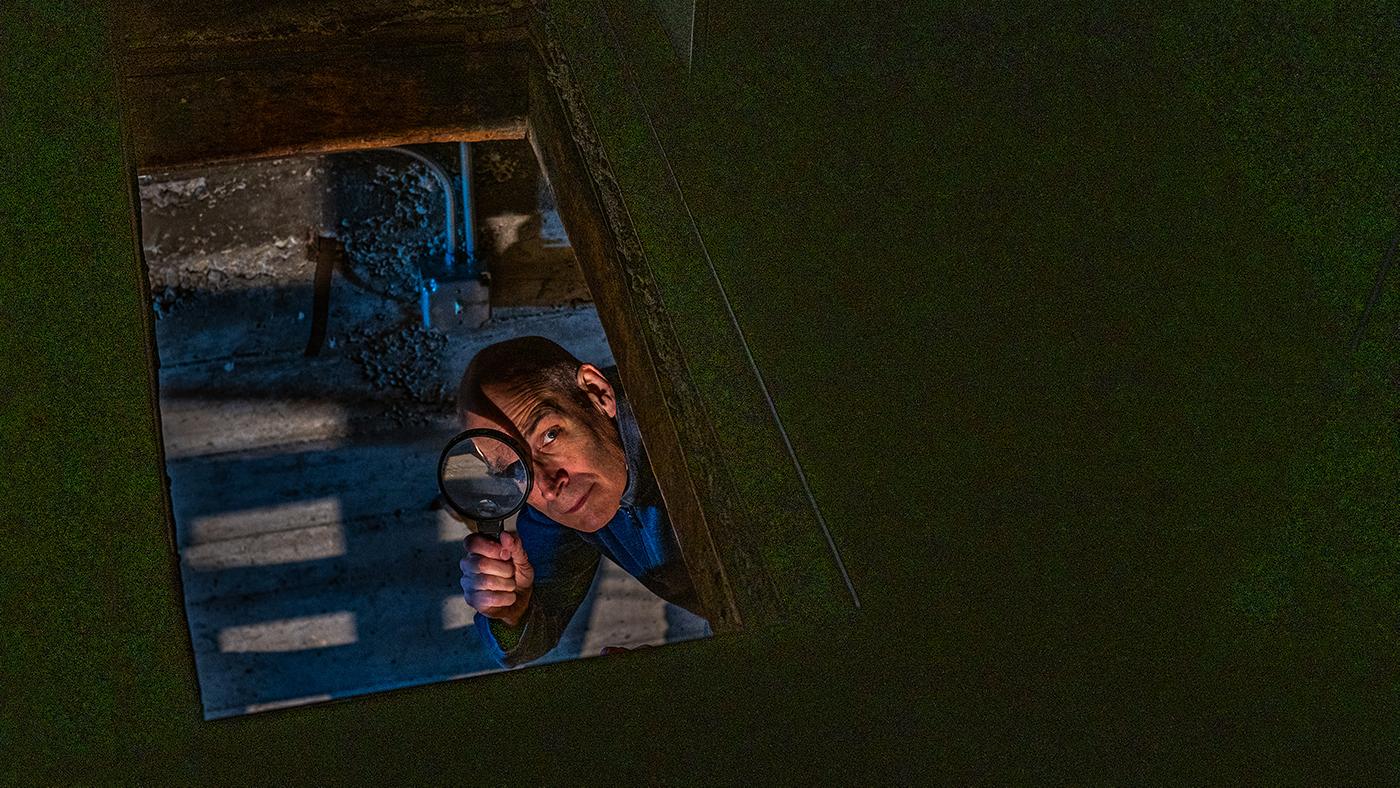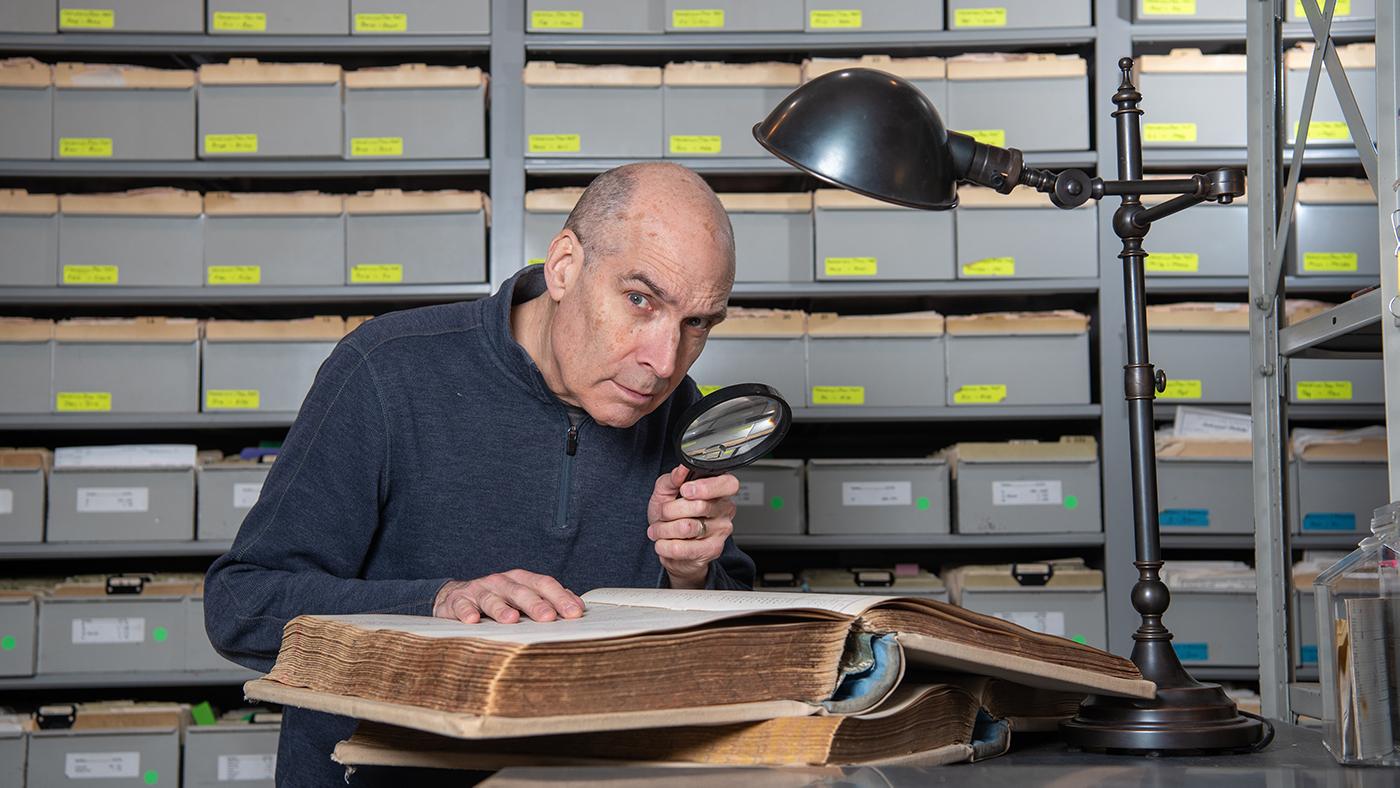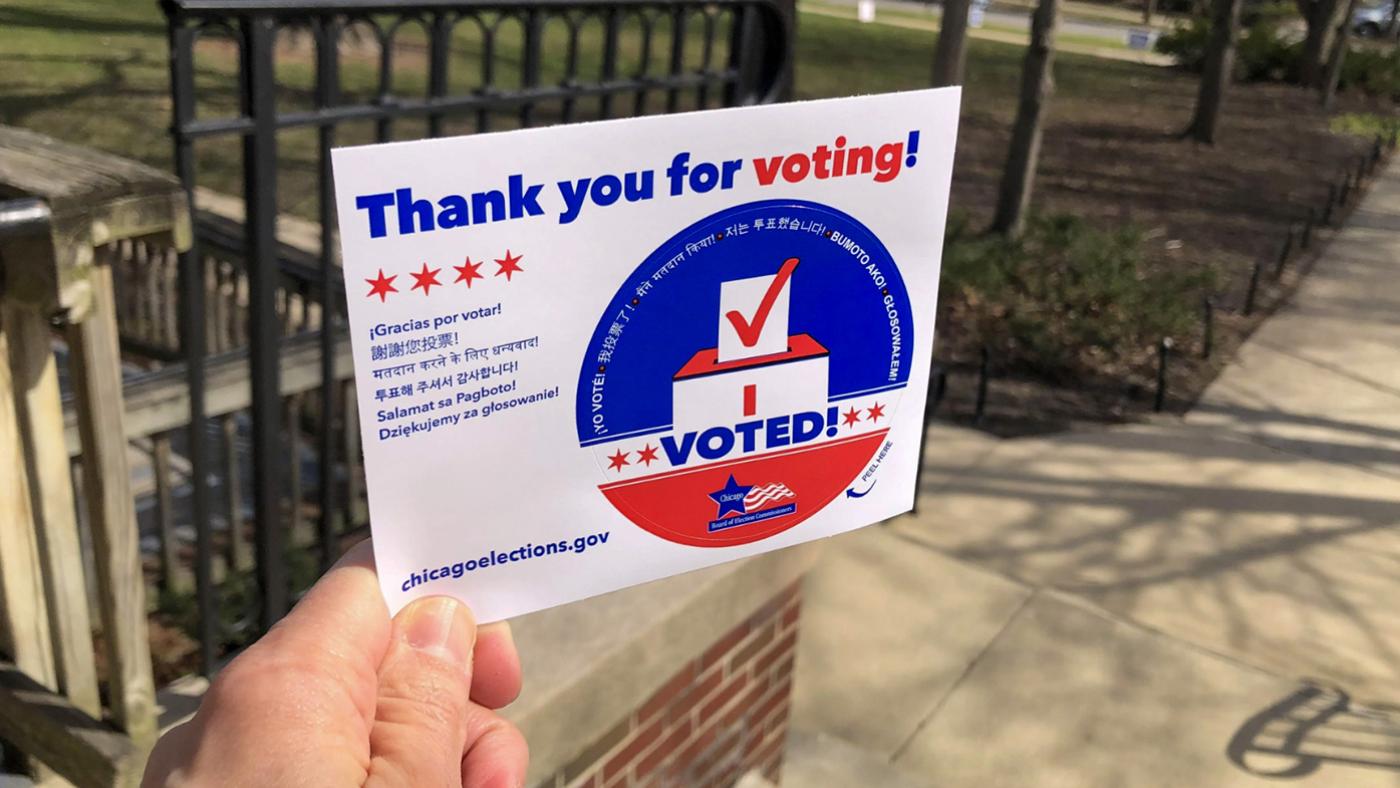How the Chicago Architecture Center Empowers Young People to Shape Their City
Daniel Hautzinger
August 27, 2018

Only nineteen percent of registered architects in the United States are women. Three percent are Latino, and two percent are African American. It’s a glaring disparity in a field that plays a vast role in everyone’s everyday life. The Chicago Architecture Center (formerly the Chicago Architecture Foundation), which moves to a new headquarters at 111 E. Wacker Drive this week, aims to address that lack of representation in architecture and to empower the wider public to engage in the architectural and urban planning decisions that affect their lives.
Two of the innovative ways CAC attempts to do this are a Teen Fellows program and a community educational initiative anchored by a graphic novel. No Small Plans follows the adventures of teens in the past, the present, and the future, as they explore Chicago and discover how issues of planning, architecture, and urban design affect them. “Every chapter wrestles with issues such as why design matters, who’s the city for, what’s the relationship between displacement and development,” says Gabrielle Lyon, CAC’s Vice President of Education and Experiences and the lead writer of the book. “We want to equip young people to think about what makes a good neighborhood, give them the tools to talk about it, and foster a sense of civic stewardship and identity.”
 A page from "No Small Plans." Image: Chicago Architecture CenterUsing No Small Plans as a starting point, CAC runs community workshops in which participants design neighborhoods – this summer, fourteen different Chicago Public Libraries hosted workshops. CAC also partners with teachers to integrate the graphic novel into curricula at schools throughout the city. For instance, a group of sixth graders on the far Southeast Side conducted a yearlong project investigating the former U.S. Steel site in their neighborhood. They studied the site with the Chicago Metropolitan Agency for Planning (a CAC partner), learned the history of the area, developed recommendations for the site, and made a formal presentation to the alderwoman with their ideas. “We thought it was a great idea for kids to learn about the building blocks of their city and understand that the city will only be great if you steward it to greatness,” Lyon says. For every copy of No Small Plans sold, CAC gives one away for free.
A page from "No Small Plans." Image: Chicago Architecture CenterUsing No Small Plans as a starting point, CAC runs community workshops in which participants design neighborhoods – this summer, fourteen different Chicago Public Libraries hosted workshops. CAC also partners with teachers to integrate the graphic novel into curricula at schools throughout the city. For instance, a group of sixth graders on the far Southeast Side conducted a yearlong project investigating the former U.S. Steel site in their neighborhood. They studied the site with the Chicago Metropolitan Agency for Planning (a CAC partner), learned the history of the area, developed recommendations for the site, and made a formal presentation to the alderwoman with their ideas. “We thought it was a great idea for kids to learn about the building blocks of their city and understand that the city will only be great if you steward it to greatness,” Lyon says. For every copy of No Small Plans sold, CAC gives one away for free.
For older kids with ambitions to enter the fields of architecture or urban planning, CAC offers an intensive, two-year Teen Fellows program for women and young people of color that starts during their sophomore year of high school. It began in 2014, the same year Lyon came to CAC. In that first year, she spent nine months trying out various experiences with a group of high schoolers; at the end, they collectively designed the future program.
After being selected through a competitive process (the program is free), the sixteen Fellows begin to learn the fundamentals of architecture, particularly architecture in Chicago, meeting every other Saturday during the school year. “We want to develop a visual literacy,” Lyon says. They then learn design skills in preparation for CAC’s pre-existing Newhouse Architecture and Design Competition, and also visit various locations for on-site learning. Over summer, they begin to engage with urban planning and community design, in part through a partnership with the Chicago Metropolitan Agency for Planning. This year, they worked with both the Chicago Loop Alliance and the Sweet Water Foundation to design site proposals and learn what it’s like to work with a client. They also visit Taliesin, Frank Lloyd Wright’s home and studio in southwest Wisconsin.
 Teen Fellows visit and work with architectural firms and can get paid summer internships while still high schoolers that may lead to job offers. Photo: Chicago Architecture Center
Teen Fellows visit and work with architectural firms and can get paid summer internships while still high schoolers that may lead to job offers. Photo: Chicago Architecture Center
Throughout these experiences, CAC nurtures critical personal skills, such as presenting and communication. At the end of the summer of their first year, they present their designs and have already begun to develop a confidence and comfort vital to the client-driven world of architecture and planning.
The second year of the Fellows program focuses on urban planning. Fellows visit Lloyd Wright’s Taliesin West in Arizona, stopping by Arizona State University, and learn about sustainability. CAC also readies them for paid summer internships with renowned Chicago architecture firms such as Jeanne Gang’s Studio Gang and Landon Bone Baker Architects – an outstanding opportunity for a high schooler. “They get paid and are acquiring very real-world experience, so we want to make sure they feel ready,” says Lyon. “We’ve been amazed at the welcome we’ve received when we’ve approached firms about hosting a high school student.” And some of those internships can turn into full-time employment: one young woman who is currently in college in Milwaukee has a standing job offer with Studio Gang once she graduates.
The Fellows program technically ends in the fall of the Fellows’ senior year, when CAC helps them with their portfolios and applying to college. But, “We’re close, so we stay in touch,” Lyon says. CAC keeps them involved with Open House Chicago and tries to make opportunities – including employment – available to them through CAC. “We want to give them a home away from home, and be there for them as a resource. But the most important thing is to inspire the feeling that they belong in this set of fields that has been formidable and hard to enter if you’re someone of color, if you’re a woman. We want them to help them speak the language, that they have a right to it. We’re helping them along on a journey, and we’re there for them. We’re not going anywhere.”







